60 years ago today, the people of Glasgow started to bid farewell to the city’s tramway, the origins of which could be traced back a further 90 years since the first horse trams began to operate on the streets on 19th August 1872. For the first 22 years the tramcars were operated by a private company – the Glasgow Tramways and Omnibus Company – but after its licence was terminated the tramway was taken over by Glasgow Corporation in 1894. Indeed, it was the first city in the country with a municipally owned and operated tramway.
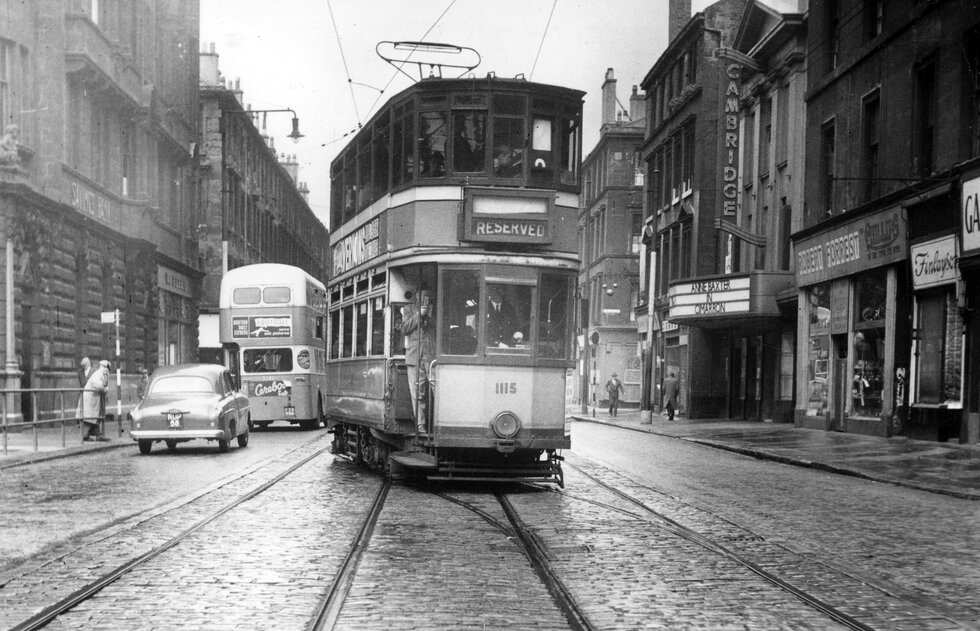
Glasgow 1115 on an enthusiasts’ farewell tour, 13th August 1962 (photo by R.B. Parr, National Tramway Museum collection).
A major expansion of the network took place over the next few years and gathered pace as the tramway was electrified between 1898 and 1902. For many years it was the second largest tramway in the country with over 100 route miles by 1922, served by over 1,000 trams. Glasgow was also the last British city to abandon its tramway, although the first route closures began in 1948.
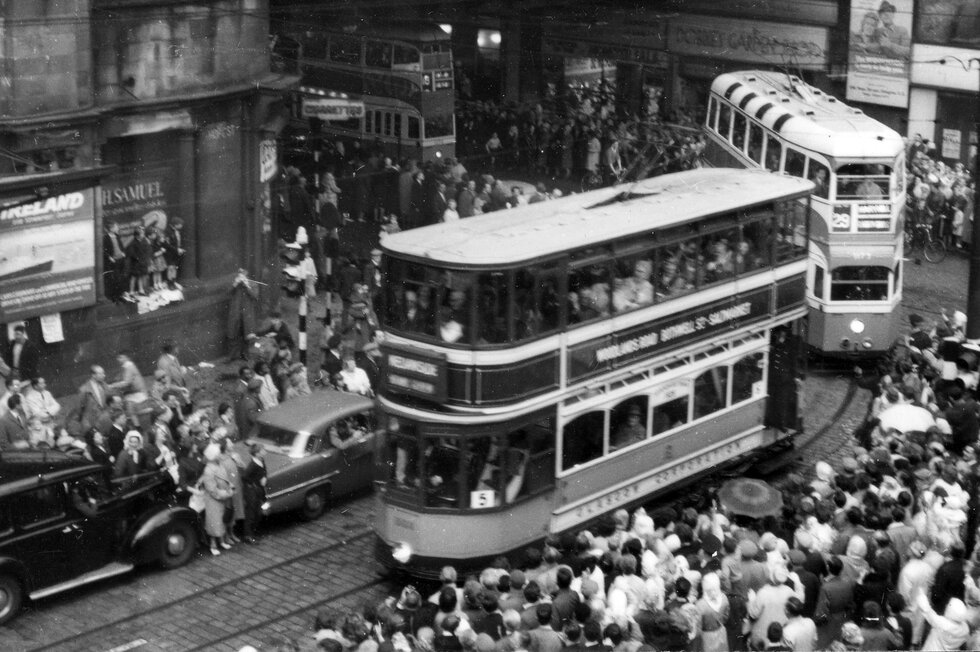
Glasgow 1088 making its way through the crowds during the final procession on 4th September 1962 (National Tramway Museum collection).
The last day of normal service on the one remaining route was on 1st September, but on the following three days special services were laid on to enable Glasgow’s citizens to take a last ride on the trams, or ‘caurs’ as they were affectionately known.
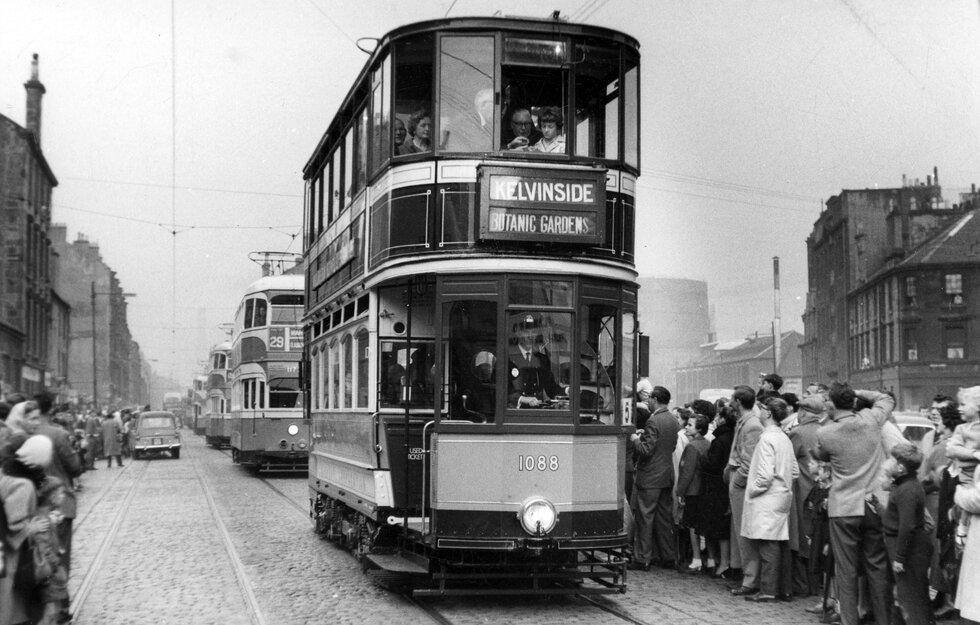
Queues of people wait to board 1088 as it heads a procession of tramcars during the final parade on 4th September 1962 (photo by D. Tate).
The proceedings culminated in a final procession of 20 historic vehicles from Dalmarnock Depot to Coplawhill works on 4th September. The procession took place in torrential rain, but this didn’t stop a quarter of a million of Glasgow’s inhabitants turning out to pay their last respects to a much-loved institution.
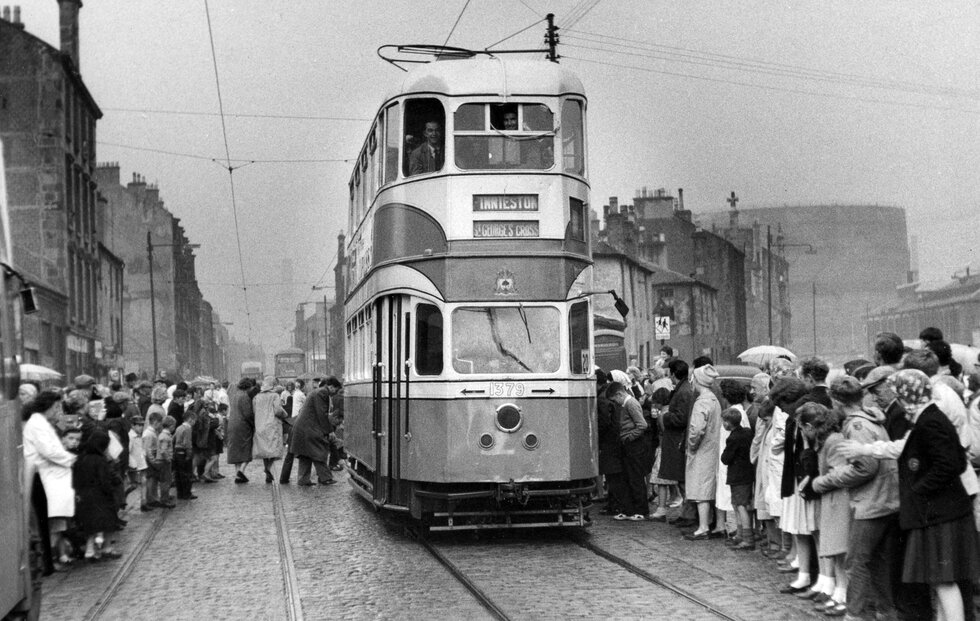
Crowds of people wait to board tram no. 1379 (the last tram in the procession) on 4th September 1962 as the rain sets in (photo by D. Tate).
On 6th September there was an additional ‘final ceremony’, this time marking Clydebank’s own last tram celebratory event two days after the last trams ran in Glasgow.
Image: Glasgow 1282 taking part in the Clydesdale closing ceremony on 6th September 1962 (photo by D. Tate).
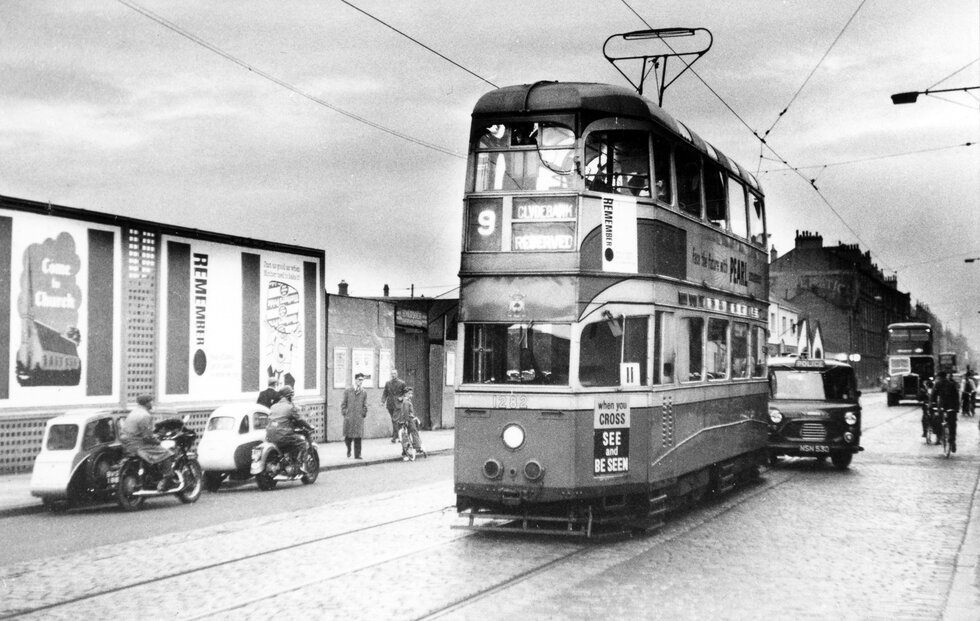
Although the passing of the Glasgow tramway was mourned by many, it did bequeath a positive legacy to the burgeoning tramcar preservation movement. One example was the conversion of Glasgow Corporation Tramways’ workshops at Coplawhill (Pollokshields) into the Glasgow Museum of Transport, which opened in 1964. The museum has been relocated a couple of times since then but continues to house several of the city’s most historic tramcars. An additional seven Glasgow passenger tramcars made their way down to the National Tramway Museum here at Crich while one went to the United States and another to Paris, before returning to Britain for a planned restoration.
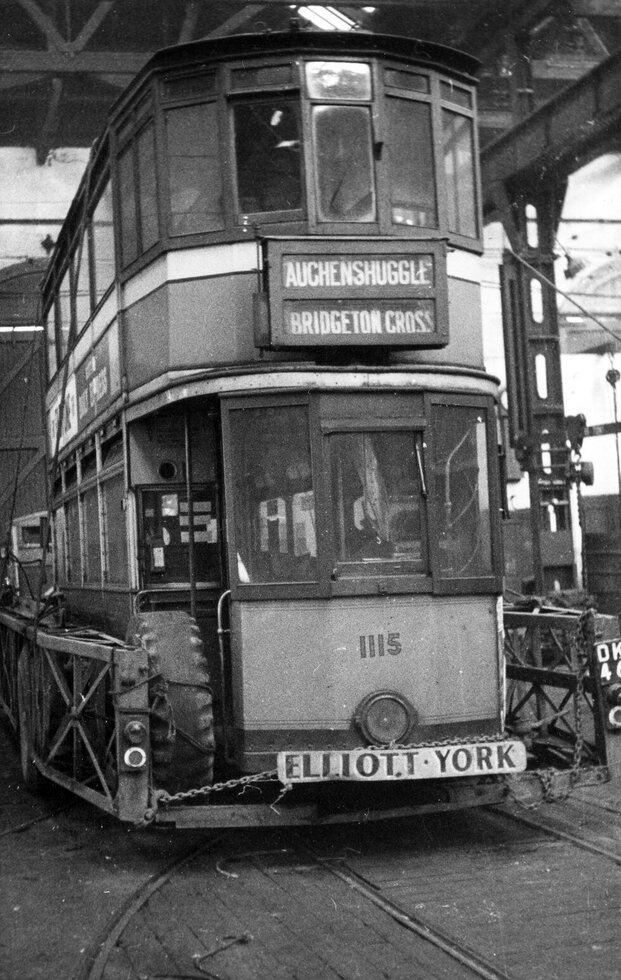
Glasgow 1115C pictured on a low-loader belonging to Elliott’s of York. Photo taken by J. Stewart jnr on 19th December 1962 – ten days later it arrived at Crich.
In addition to the various Glasgow trams that have seen operational service over the years at the National Tramway Museum, a single-deck Glasgow tramcar – no. 1017, a former ‘school’ car for trainee motormen – continues to operate at Summerlee Museum of Traditional Scottish Life in Lanarkshire.
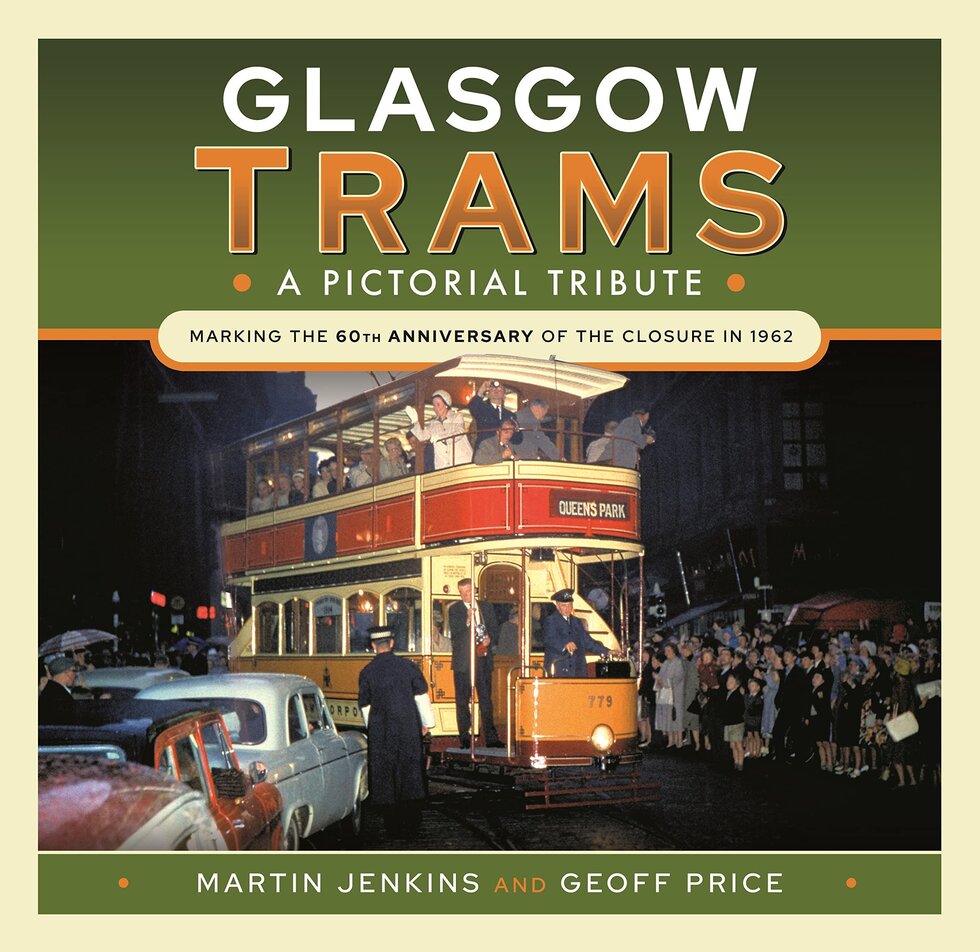
Glasgow Corporation’s tramway is also well represented in the National Tramway Museum’s library, the latest addition to which is, fittingly, a pictorial tribute to Glasgow’s trams by Martin Jenkins and Geoff Price, which marks the 60th Anniversary of the tramway’s closure.
If you have been inspired to find out more about the end of Glasgow’s tramway system, here are some other sources of information to explore:
- To see footage of the last Glasgow tram in public service and the farewell procession on 4th September 1962, view this clip on the National Library of Scotland website here: https://movingimage.nls.uk/film/0987
- To watch ‘Tonight’s’ Fyfe Robertson covering Glasgow’s last remaining tram, broadcast on 3rd September 1962, visit the BBC film archive here: https://www.bbc.co.uk/archive/glasgow-last-tram-1962/z33cvwx
- To view a painting of Glasgow’s last tram procession, see: https://artuk.org/discover/artworks/the-last-tram-procession-86805
- To read a first-hand account of riding on Glasgow’s last trams by Dr Bob Tebb, a long-time member of the Tramway Museum Society since 1960, click here: Robert G P Tebb Memoirs – Glasgow 1962 With thanks to Bob Tebb for recording his memories of this historic occasion and allowing us to reproduce it here.
